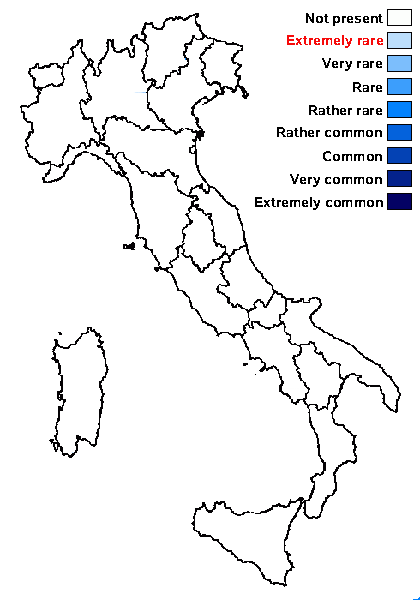Lecanora mugosphagneti Poelt & Vězda
Bibl. Lichenol., 16: 364, 1981
Synonyms:
Distribution:
Description: Thallus crustose to subleprose, episubstratic, rather thick, whitish to pale grey, soon almost completely covered with early coalescent soralia with fine, whitish soredia, usually forming large patches, often delimited by a cottony-arachnoid, whitish prothallus. Apothecia very rare, lecanorine, round to usually irregular in outline (often deformed by mutual compression), 0.5-1.8(-2.5) mm across, sessile and constricted at base, with a flat to convex, pink-brown to flesh-coloured, but strongly white-pruinose disc and a smooth, often sinuous thalline margin. Thalline exciple ecorticate, with numerous small crystals soluble in K; epithecium pale brown, with pigment and crystals dissolving in K; hymenium colourless; paraphyses branched and anastomosing, not or only slightly thickened at apex; hypothecium colourless. Asci 8-spored, clavate, Lecanora-type. Ascospores 1-celled, hyaline, ellipsoid, 9-12(-14) x 6-8 µm . Photobiont chlorococcoid. Spot tests: thallus K+ yellow, C-, KC-, P+ yellow. Chemistry: thallus with atranorin, caperatic and roccellic acids; apothecia with protocetraric acid.Note: on bark of Pinus mugo in bogs; a very rare species, known from very few sites in the Alps, outside Italian territory; to be looked for in the Italian Alps.
Growth form: Crustose
Substrata: bark
Photobiont: green algae other than Trentepohlia
Reproductive strategy: mainly asexual, by soredia, or soredia-like structures (e.g. blastidia)

Predictive model
Growth form: Crustose
Substrata: bark
Photobiont: green algae other than Trentepohlia
Reproductive strategy: mainly asexual, by soredia, or soredia-like structures (e.g. blastidia)

Predictive model
 Index Fungorum
Index Fungorum
 GBIF
GBIF

